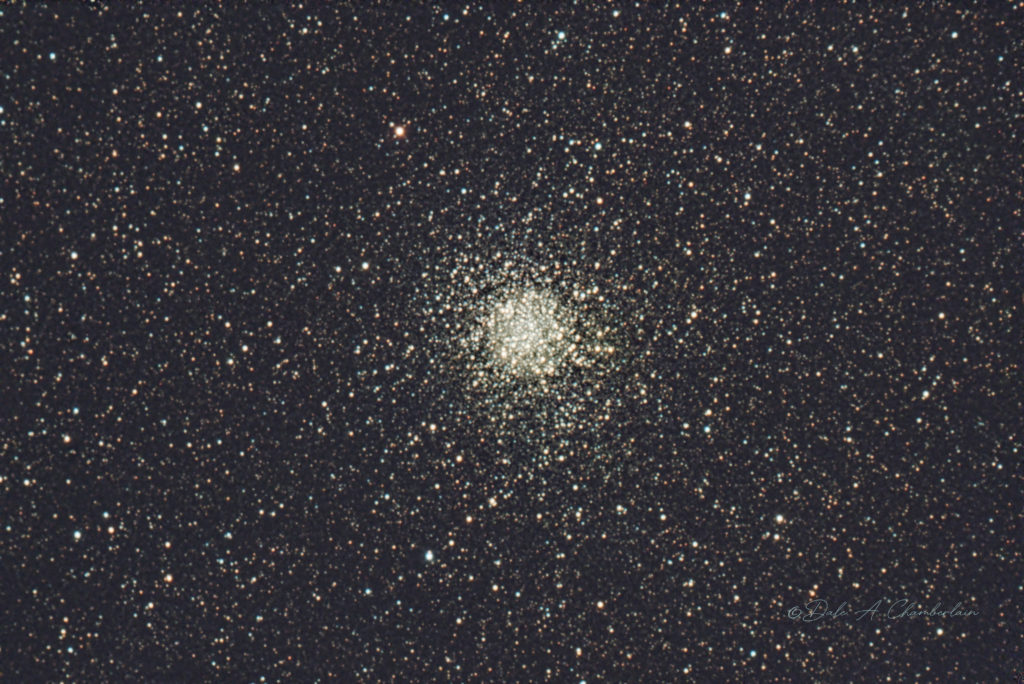
Object: Messier 22 or M22, also known as NGC 6656, is an elliptical globular cluster of stars in the constellation Sagittarius, near the Galactic bulge region.
It is one of the brightest globulars visible in the night sky. The brightest stars are 11th magnitude, with hundreds of stars bright enough to resolve with an 8″ telescope. M22 was one of the first globulars to be discovered, in 1665 by Abraham Ihle and it was included in Charles Messier’s catalog of comet-like objects in 1764. It was one of the first globular clusters to be carefully studied – first by Harlow Shapley in 1930. He placed within it roughly 70,000 stars and found it had a dense core. M22 is one of the nearer globular clusters to Earth – at about 10,600 light-years away. Its diameter (width across) is 99 ± 9 light-years, given its estimated distance. 32 variable stars have been recorded in M22. It is in front of part of the galactic bulge and is therefore useful for its microlensing effect on those background stars.
Taken: October 1, 2022
Telescope: Astro-Tech 14” RC with Starizona Apex-ED L 0.65x focal reducer
Mount: Paramount ME II
Camera: ZWO ASI2600MC-Pro (cooled to 0C; Gain 100) Bin 1×1.
Guiding: No Guiding
Focuser: Moonlite Nitecrawler
Rotator: Moonlite Nitecrawler
Filters used: Optolong L-Pro
Exposures: 19×90 seconds for a total exposure time of 28.5 minutes; calibrated with 40 dark frames, 40 flat frames with 40 dark-flats.
Seeing Conditions:
Image capture and telescope control: Nighttime Imaging ‘N’ Astronomy with (N.I.N.A.) / TheSkyX Pro with a SkyShed POD MAX observatory.
Processed with PixInsight, Photoshop CC 2022